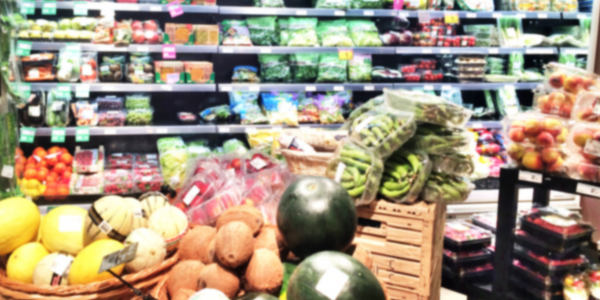公司规模
Large Corporate
地区
- Europe
国家
- Poland
产品
- Allegro e-commerce platform
- CARTO’s Location Intelligence platform
- Google’s BigQuery data warehouse
技术栈
- Google Cloud Platform
- BigQuery
- CARTO
实施规模
- Enterprise-wide Deployment
影响指标
- Productivity Improvements
- Customer Satisfaction
技术
- 分析与建模 - 大数据分析
- 平台即服务 (PaaS) - 数据管理平台
适用行业
- 电子商务
- 零售
适用功能
- 物流运输
- 销售与市场营销
用例
- 供应链可见性(SCV)
- 库存管理
- 需求计划与预测
服务
- 云规划/设计/实施服务
- 数据科学服务
关于客户
Allegro is the most popular shopping platform in Poland and the largest e-commerce platform of European origin. Allegro operates a marketplace model where customers can buy whatever they need from over 135,000 merchants, who can list an unlimited number of offers on the platform. Each month, 22 million customers visit Allegro’s platform, which is equivalent to almost 80% of all Internet users in Poland. The company decided to invest in its own logistics and delivery services to improve consumer convenience and speed up deliveries.
挑战
Allegro, a leading e-commerce platform in Central Europe, decided to invest in its own logistics and delivery services. Using its own fulfillment infrastructure, network of parcel lockers, and last-mile delivery services, the company aimed to improve consumer convenience and speed up deliveries. This meant that Allegro needed to have greater control over these services, to support their transition from an online to omnichannel player. The challenge in Allegro’s case was having the right analytics platform and tools in place to support their network expansion in 3 key areas: strategy, execution, and performance measurement. Specifically, the main goal was to drive an efficient and cost-effective growth strategy for its network of parcel lockers, a type of delivery that currently makes up a staggering 70% of deliveries in Poland.
解决方案
Allegro needed to use spatial data and analytics to test hypotheses for business decision-makers and simulate various expansion scenarios, at both a national and local level. This required a data-driven approach that takes into account various variables, from volume distribution to population density. To make this possible, Allegro had to geocode and integrate internal datasets (such as delivery and pick-up locations, machine locations, Allegro real estate, etc.), and combine them with acquired external sociodemographic, real estate, and mobility data as well as open source data from OSM and the statistical office. The goal was to obtain a visual representation of all analyzed data, readily available in the form of interactive, user-friendly dashboards. CARTO’s Location Intelligence platform provided the out-of-the-box capabilities the Allegro team was looking for, with seamless cloud integration and data processing, fully customizable map visualizations, and advanced spatial analytics.
运营影响

Case Study missing?
Start adding your own!
Register with your work email and create a new case study profile for your business.
相关案例.

Case Study
Improving Production Line Efficiency with Ethernet Micro RTU Controller
Moxa was asked to provide a connectivity solution for one of the world's leading cosmetics companies. This multinational corporation, with retail presence in 130 countries, 23 global braches, and over 66,000 employees, sought to improve the efficiency of their production process by migrating from manual monitoring to an automatic productivity monitoring system. The production line was being monitored by ABB Real-TPI, a factory information system that offers data collection and analysis to improve plant efficiency. Due to software limitations, the customer needed an OPC server and a corresponding I/O solution to collect data from additional sensor devices for the Real-TPI system. The goal is to enable the factory information system to more thoroughly collect data from every corner of the production line. This will improve its ability to measure Overall Equipment Effectiveness (OEE) and translate into increased production efficiencies. System Requirements • Instant status updates while still consuming minimal bandwidth to relieve strain on limited factory networks • Interoperable with ABB Real-TPI • Small form factor appropriate for deployment where space is scarce • Remote software management and configuration to simplify operations

Case Study
Digital Retail Security Solutions
Sennco wanted to help its retail customers increase sales and profits by developing an innovative alarm system as opposed to conventional connected alarms that are permanently tethered to display products. These traditional security systems were cumbersome and intrusive to the customer shopping experience. Additionally, they provided no useful data or analytics.

Case Study
How Sirqul’s IoT Platform is Crafting Carrefour’s New In-Store Experiences
Carrefour Taiwan’s goal is to be completely digital by end of 2018. Out-dated manual methods for analysis and assumptions limited Carrefour’s ability to change the customer experience and were void of real-time decision-making capabilities. Rather than relying solely on sales data, assumptions, and disparate systems, Carrefour Taiwan’s CEO led an initiative to find a connected IoT solution that could give the team the ability to make real-time changes and more informed decisions. Prior to implementing, Carrefour struggled to address their conversion rates and did not have the proper insights into the customer decision-making process nor how to make an immediate impact without losing customer confidence.

Case Study
Ensures Cold Milk in Your Supermarket
As of 2014, AK-Centralen has over 1,500 Danish supermarkets equipped, and utilizes 16 operators, and is open 24 hours a day, 365 days a year. AK-Centralen needed the ability to monitor the cooling alarms from around the country, 24 hours a day, 365 days a year. Each and every time the door to a milk cooler or a freezer does not close properly, an alarm goes off on a computer screen in a control building in southwestern Odense. This type of alarm will go off approximately 140,000 times per year, equating to roughly 400 alarms in a 24-hour period. Should an alarm go off, then there is only a limited amount of time to act before dairy products or frozen pizza must be disposed of, and this type of waste can quickly start to cost a supermarket a great deal of money.

Case Study
Supermarket Energy Savings
The client had previously deployed a one-meter-per-store monitoring program. Given the manner in which energy consumption changes with external temperature, hour of the day, day of week and month of year, a single meter solution lacked the ability to detect the difference between a true problem and a changing store environment. Most importantly, a single meter solution could never identify root cause of energy consumption changes. This approach never reduced the number of truck-rolls or man-hours required to find and resolve issues.








